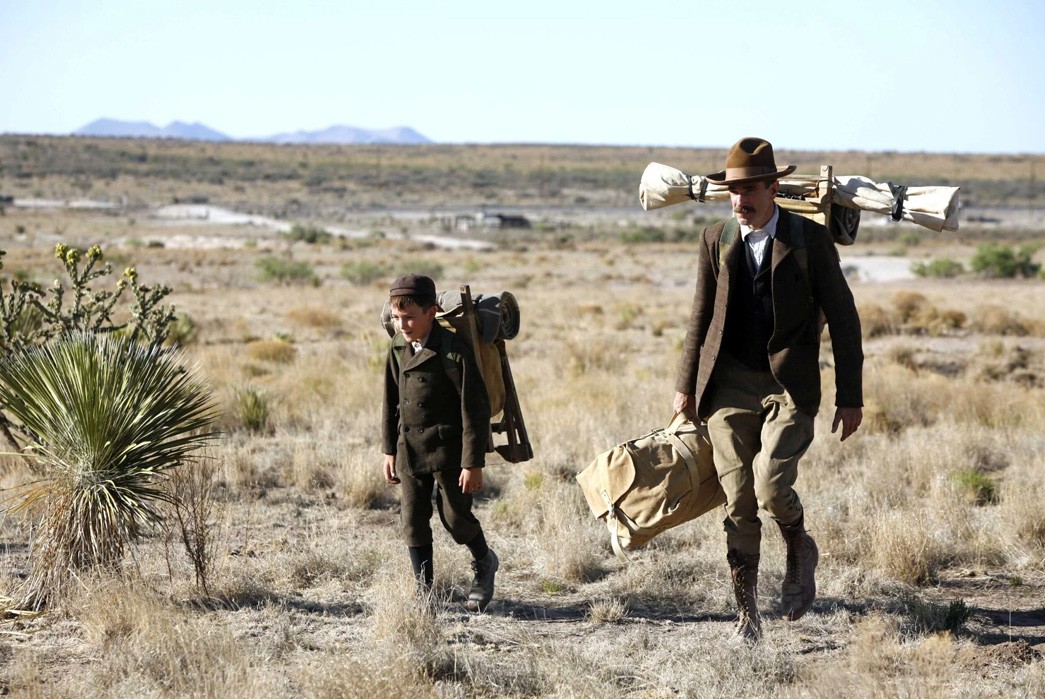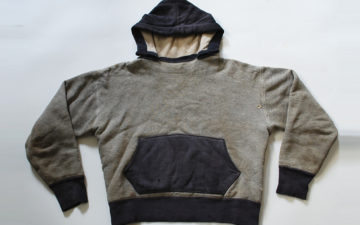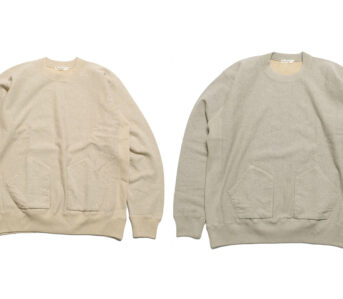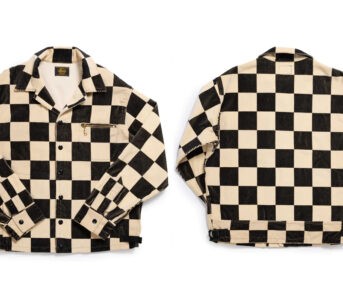Pockets will only take you so far. Whether you’re carrying books to class or a load of equipment on a three-hour-long ruck march, backpacks will take you further and faster than any other accessory.
Backpacks have evolved to carry a wide range of specialized gear for any mission. My favorite is a water-resistant backpack for camping that has loops on the side to carry a hatchet and straps on top for the ground cloth and blanket. In college, I remember backpacks with dedicated pencil and pen pockets (that could also hold a phone charger or a bag of Cheetos). Below, we’ll examine how humble materials like canvas, leather, and wood have evolved into the ergonomic, stuff-swallowing storage compartments that we pull onto our shoulders every day.
Backpack, Knapsack, and Rucksack
English is sometimes cruel to us in that we have a lot of words that can essentially mean the same thing.
The easiest pack to distinguish is the rucksack—think of these as large, utilitarian, military-grade packs for carrying some serious gear over serious distances. There’s even a (slang) verb to accompany it; “rucking.” As the term implies, it involves walking, hiking, or marching long distances while being strapped down with a rucksack. This exercise is common for physical training and a requirement for expert soldiering.
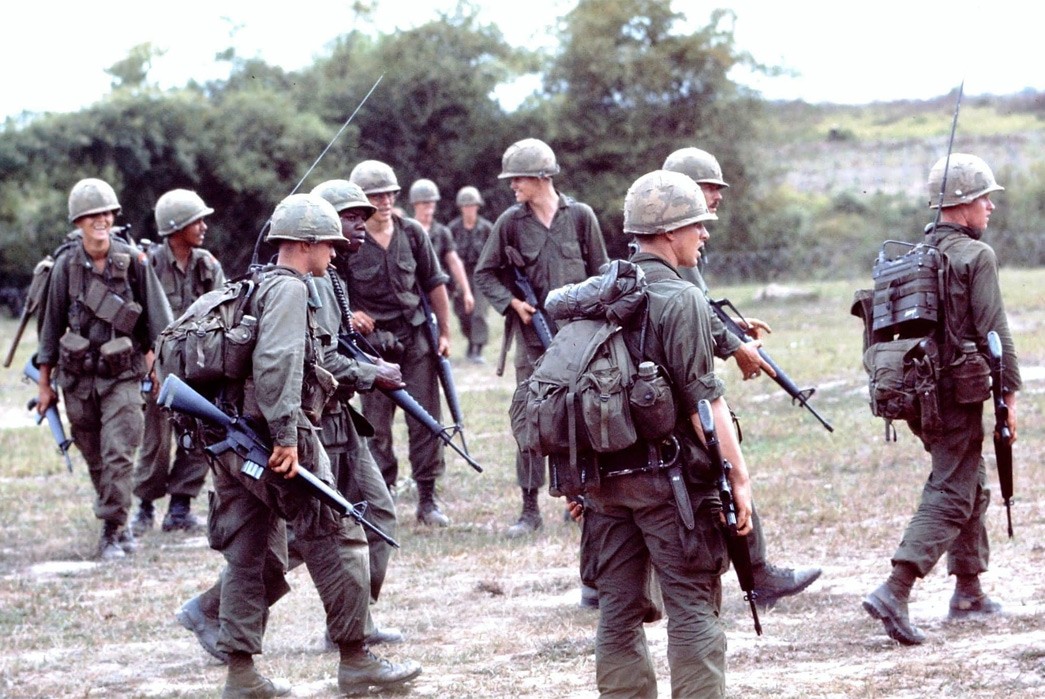
The U.S. Army’s lightweight rucksack of 1968 was mounted to a field pack frame. Image via gear-illustration.com.
Speaking of military gear, a knapsack was the historical choice for many of the world’s armies. Some people, namely Canadians, will use the terms knapsack and backpack interchangeably today. Reading the justifications for one term over the other, I’m hard-pressed to find any concrete differences other than the fact that the usage of “knapsack” tapered off in the mid-20th century. It’s just a matter of semantics. The popularity of the word “backpack” coincides with the dominance of zippers after World War II and a time when schoolkids began carrying what we recognize as the accessory’s modern iteration—so, the association stuck.
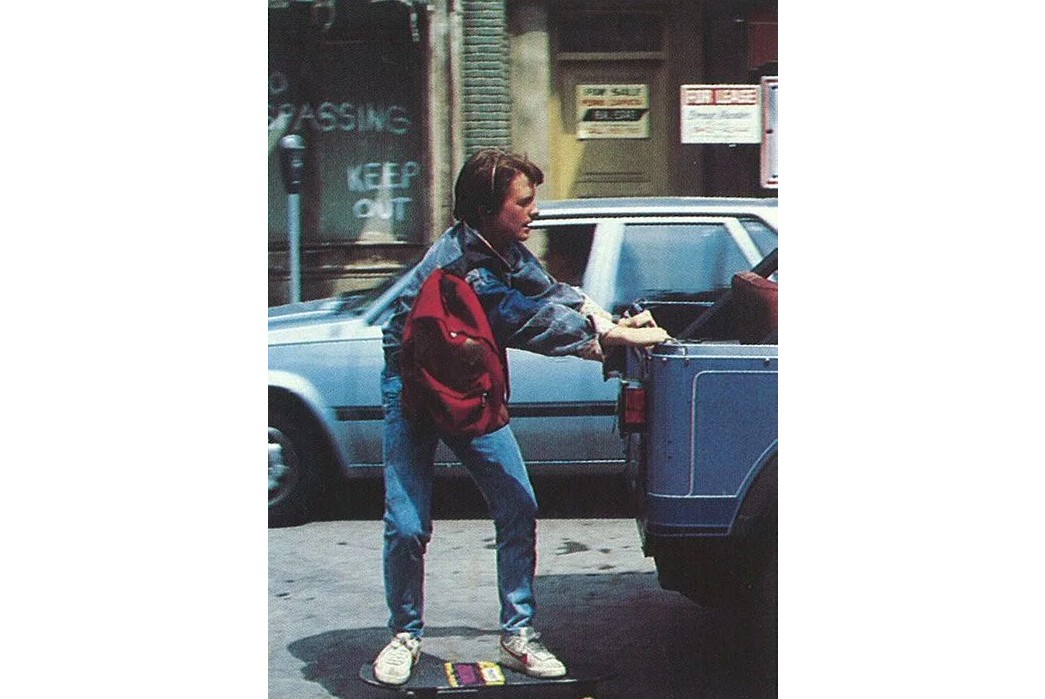
Marty McFly (Michael J. Fox) sported a red pack in “Back to the Future Part II” (1989). Image via GQ España.
Blanket Rolls and Bindle Sticks
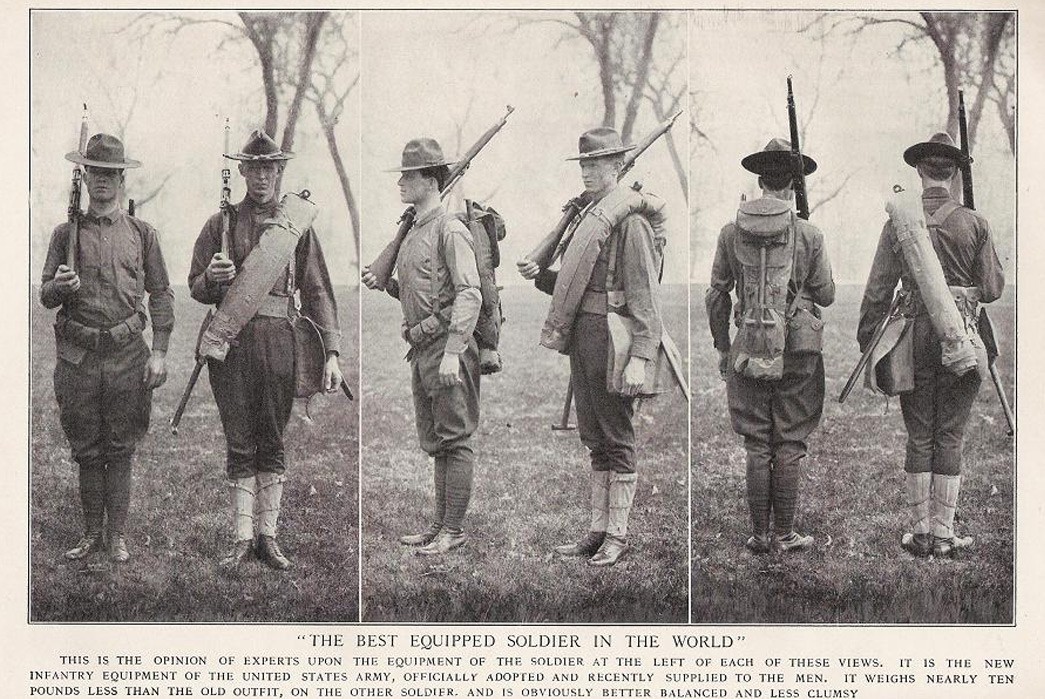
A circa 1917 image compares the American pack system with the traditional blanket roll. Image via Phil-osophy.
A few improvised systems get “honorary mention” as far as backpacks go. A “bedding” or “blanket roll” is exactly that; placing your items inside of a blanket that can be rolled, tied to itself at the ends, and thrown over your shoulder like a sash. In some cases, a waterproof blanket, ground cloth, or shelter half can be rolled on the outside to make the whole thing waterproof. This resourceful method goes back to at least a few centuries. In 1800s Australia, transient laborers wore something similar known as a “swag” and thereafter dubbed “swagmen” or “swaggies.”
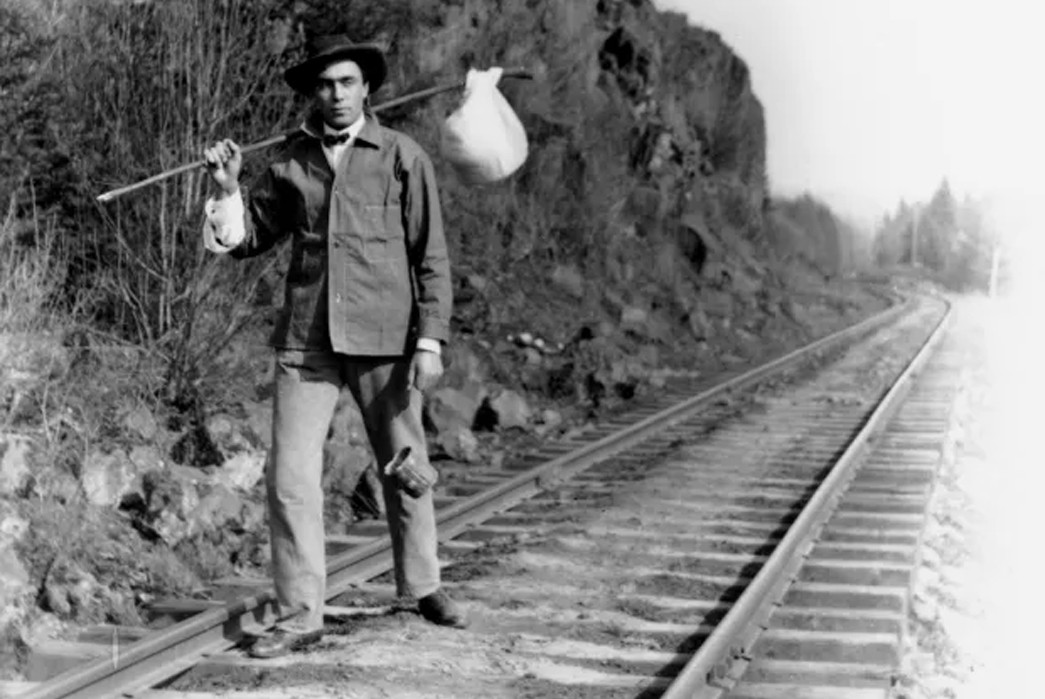
A hobo, or hobo stand-in, carries his bindle stick for the camera. Image via “The San Bernardino Sun.”
Speaking of iterant labor, bindle sticks were popularized in the late 19th century. Their construction involves tying your belongings in a makeshift sack—a large bandana works—that’s suspended from the end of a sturdy stick and carried on your shoulder. Hobos made the bindle iconic during the Great Depression of the 1930s and bindles remain an inseparable part of their image.
Pack Frame
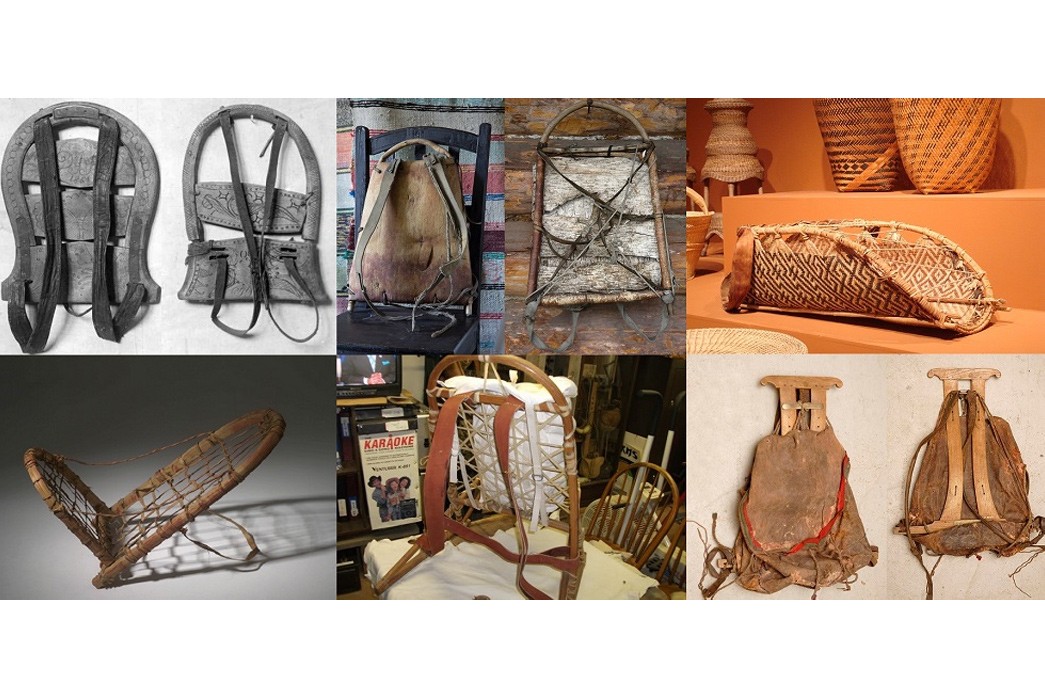
Pack frame examples can be found in many cultures. Image via Carryology.
The earliest backpacks were not for individuals with sore shoulders. Ancient peoples recognized the need to carry crucial things: animal carcasses to feed their families, wild fruits foraged from the wilderness, and even their children. Like with everything in life, they used what they had and wood made the ideal base for what became known as a ‘pack frame’. From this bare frame, they could rig whatever they needed to carry like a human flatbed truck.
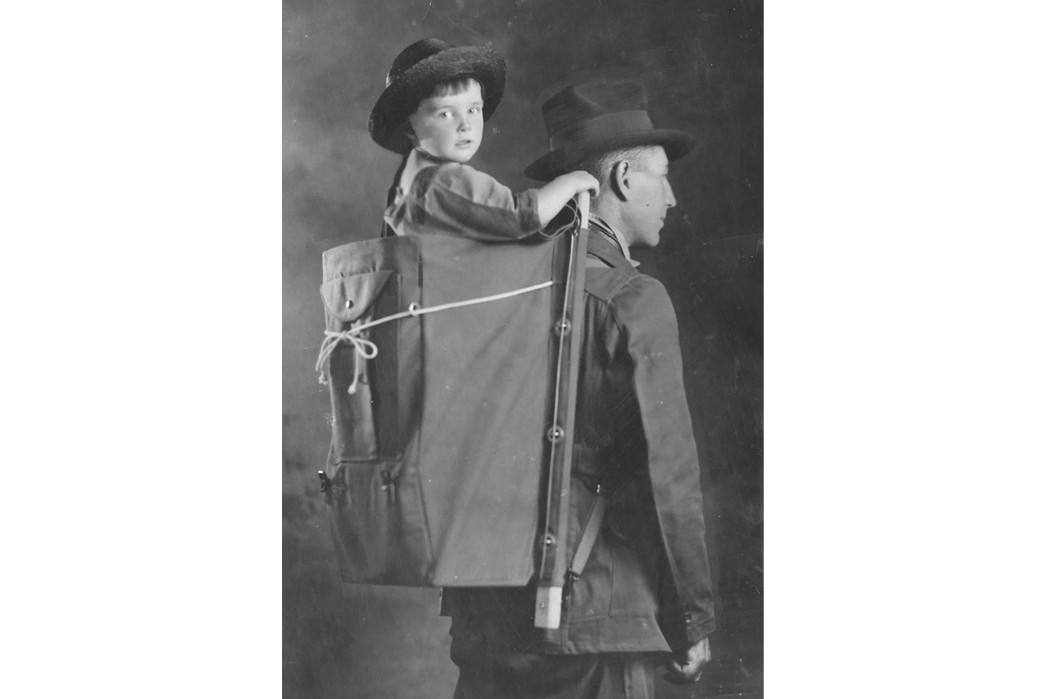
“Trapper Nelson’s Indian Pack Board,” ca. 1922. Image via History Link.org.
Lloyd Nelson, an entrepreneur in the outdoor sporting goods industry, saw indigenous pack frames when he encountered the Inuit people on an arduous expedition through Alaska in 1920. He then adapted the design with cutting-edge construction and materials. The end product? “Trapper Nelson’s Indian Pack Board.” Modern hunters will recognize the pack frame as an essential part of their kit to this day. Meanwhile, materials like wood and leather have largely been substituted for synthetics and metals.
Knapsacks and Gunpowder
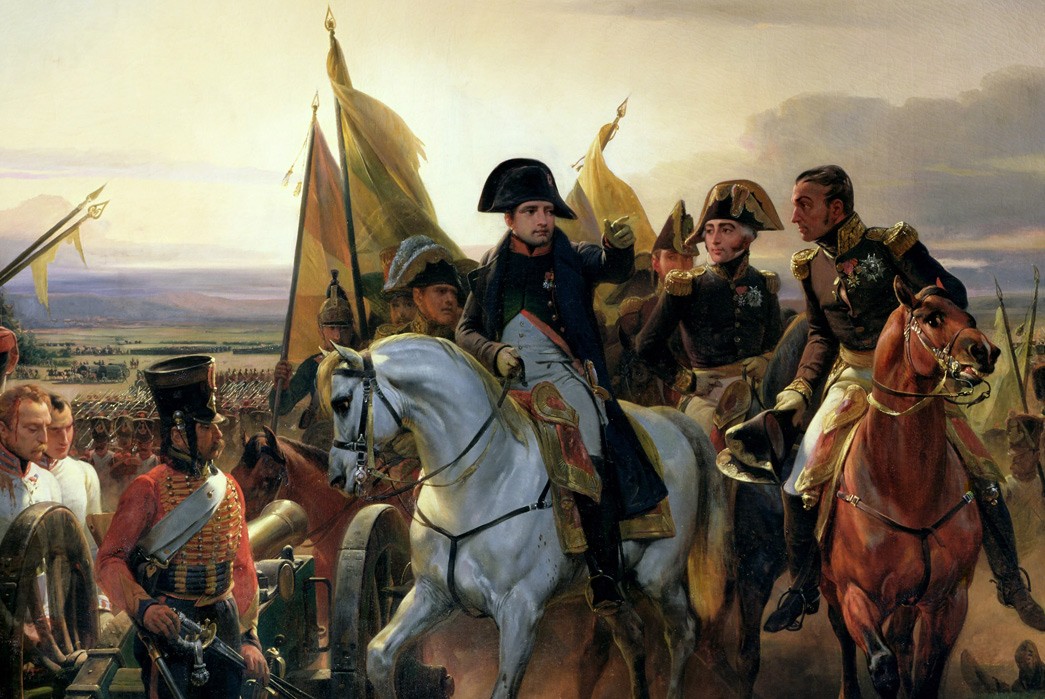
Napoleon commands his “Grand Armée” at the 1807 Battle of Friedland in this painting by Emile Jean Horace Vernet. Note the French hair-on-hide leather knapsacks on the far right. Image via Bridgeman Images.
The late 13th century saw a revolution in European warfare that started with a bang. Gunpowder had changed weaponry forever. As weapons technology was honed over the following centuries, the equipment, tactics, and uniforms followed suit. Deadly distances grew further with the help of aimed projectiles. Marching troops became a fleet of foot. Metal armor gradually shrank and castles were abandoned. To this end, each soldier needed to be a self-contained fighting machine.
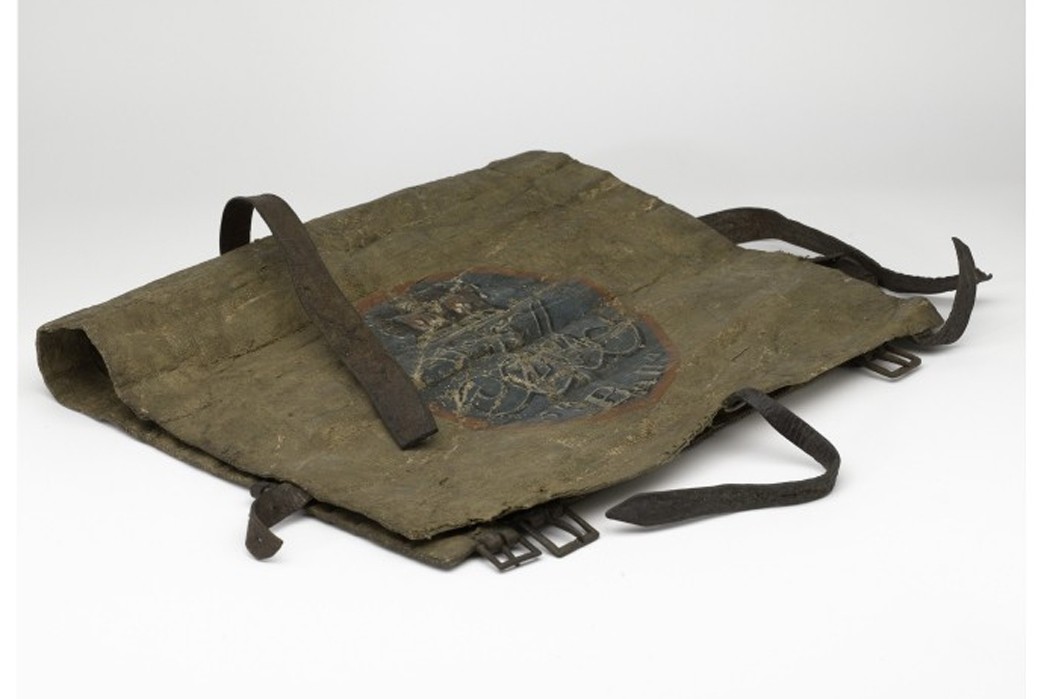
A British military knapsack made circa 1800. Image via ageofrevolution.org.
At least by the 18th century, soldiers carried their belongings in knapsacks. These early backpacks held their “homes” while on the march—neatly packed, rolled, and ready to set up their bedding or change socks. These packs commonly feature cloth or leather bodies with leather shoulder straps. The weight of the contents coupled with the straps could sometimes cause “pack palsy” if they weren’t worn properly.
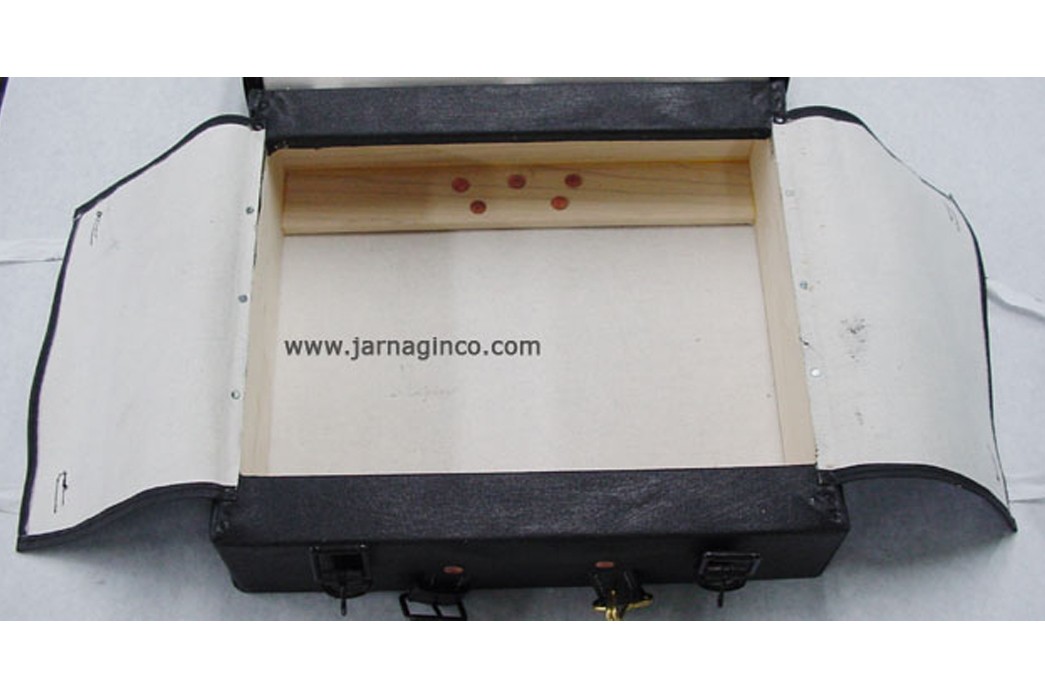
A modern reproduction of a pre-1855 pattern American “hard pack.” Image via C & D Jarnagin Company.
Rigid military packs could still be found in the 19th century but soft packs would soon eclipse them. Manufacturing meant that producing bags became more of an engineering exercise than a hand-sewn project. The American Civil War saw a mix of everything. Knapsacks were homemade, mass-produced, or imported from the United Kingdom. The U.S. Double Bag knapsack was introduced in 1855 and became standard for the Union Army during the war. It may well have set the national precedent for multi-compartment, soft packs.
To Market
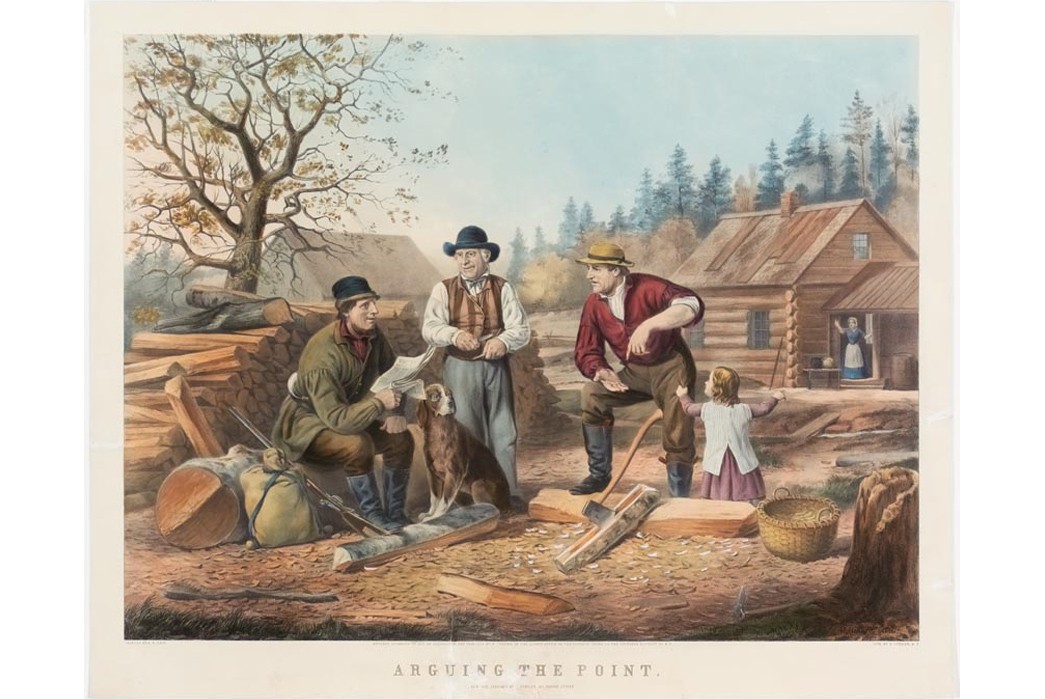
“Arguing the Point” by the American painter Nathaniel Currier (1855). Note the pack at the bottom left. Image via Springfield Museums.
Homemade packs, while not as common as their military counterparts, have existed for centuries in various forms. Diderot’s Encyclopedia includes a simple sack with shoulder straps that are tied to the top with rope—a concept that’s referenced a century later in the United States. I’ve made this design myself and it’s pretty effective. For waterproofing, a bit of beeswax and linseed oil works wonders on canvas.
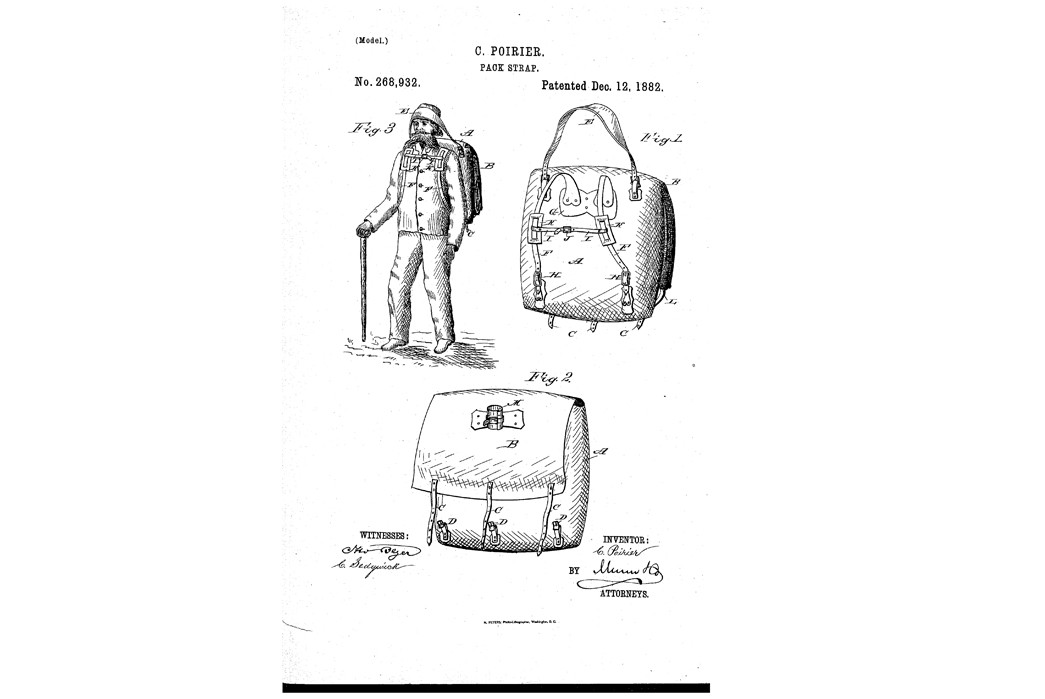
Poirer’s patent. Image via Google Patents.
Outdoor adventuring became a hot pastime in the late 19th and early 20th centuries. As with camping and hiking today, backpacks were an absolute necessity that manufacturers began to tinker with. Chief among them was Camille Poirer, a backpack innovator and founder of Duluth Pack which is still in business today. His 1882 patent reflects a design that’s reminiscent of Civil War-era packs with some key ergonomic improvements. The backpack as a commercial enterprise was instituted.
Modern Makers
Now, it’s your turn. What will you put in your backpack of choice?
This is the best question to ask yourself when selecting a high-end version like the ones listed below. Lay your carry items out on your bed and think about them in terms of bulk and volume. You might be surprised what you don’t need to carry. The key takeaway: emphasize efficient packing over carrying as much stuff as possible. Make Marie Kondo proud.
Billykirk
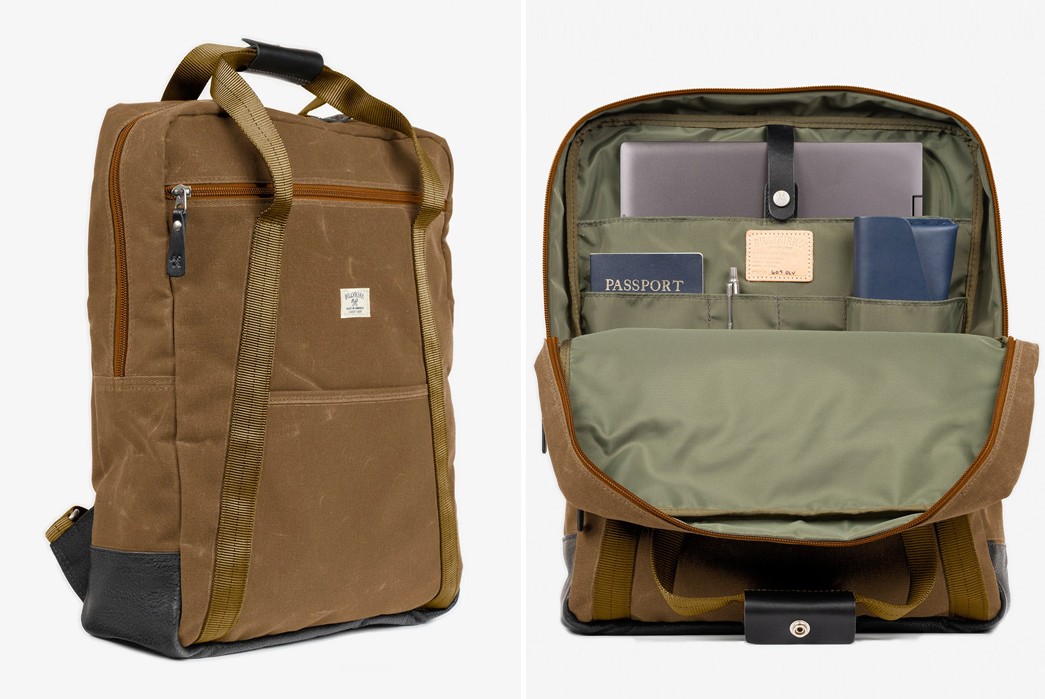
This product is an example of, “Why hasn’t anyone done this sooner?” Combining the best of a tote bag with the convenience of shoulder straps is a great solution for traveling light. The composite leather and canvas construction of the Billykirk No. 609 Standard Issue Backpack Toteadds durability where it’s needed (on the bottom) while shedding rain with a waxed canvas upper. Other details, like the nickel-plated hardware and nylon webbing, are a testament to the engineering that went into this pack.
Available from Billykirk for $275.
Bradley Mountain
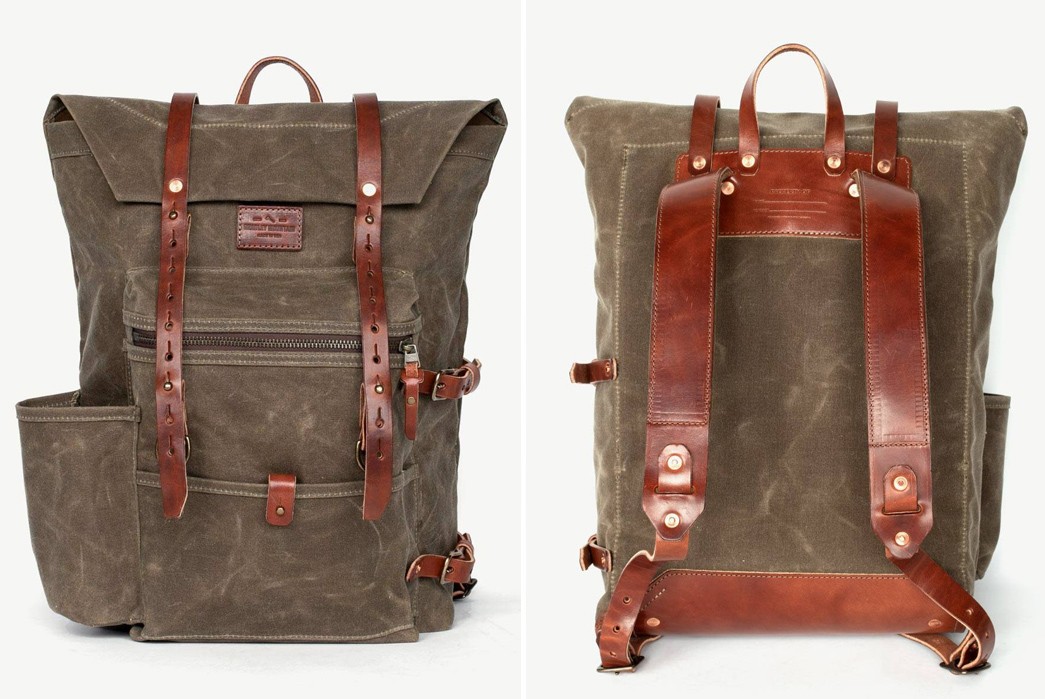
Some companies turn everything they touch into gold. Bradley Mountain is no exception. Their meteoric rise was recently marked by endorsement from Mike Wolfe, one of the hosts of American Pickers and an authority on all things “Americana.” For Bradley Mountain to say this piece is their “proudest creation” is nothing short of attention-grabbing, and the photos prove that! In terms of luggage, its artwork—both in aesthetics and how efficiently it’s laid out. Extra heavy water-resistant canvas is sure to wear like iron on the outside.
You can head to Manready Mercantile to experience the Wilder Backpack for $479.
Filson
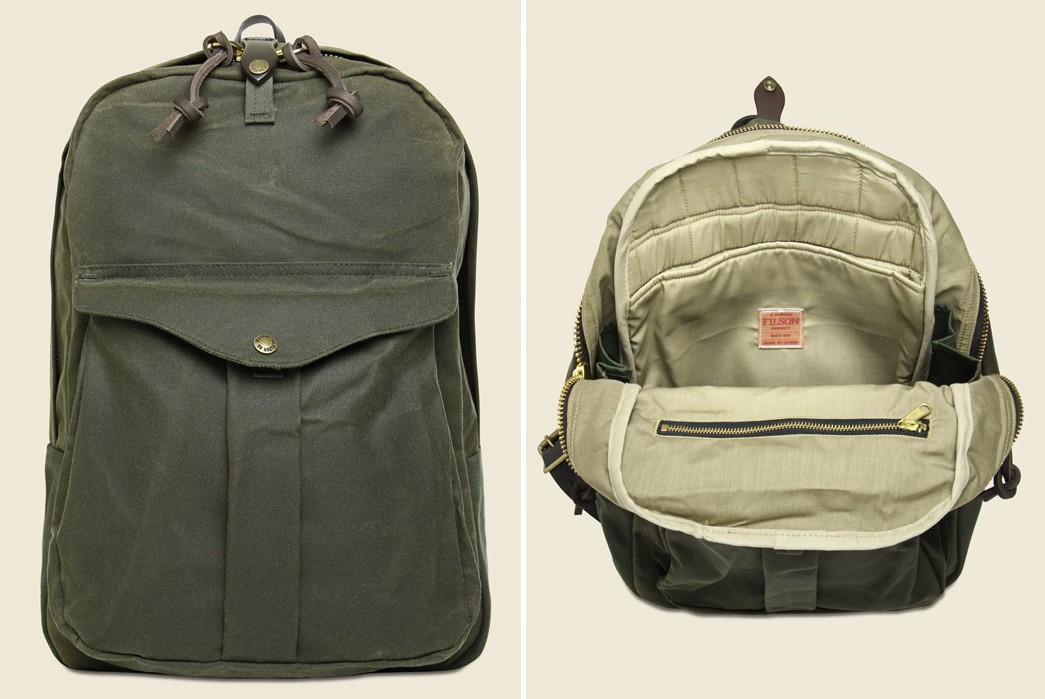
C. C. Filson has created its legacy based on “Tin Cloth.” What started as the fabric of choice for clothing loggers in the Pacific Northwest can now be found on everything from wallets to—you guessed it—backpacks. While this material is used to being covered in sawdust and tree sap, it retains a sort of elegance that Filson brings out. The brass zipper adds a refined flair that compliments the bridle leather body tabs. This backpack will transition between streets and forests without effort.
Stag Provisions carries the Tin Cloth Journeyman Backpack for $395.
John Gluckow X Warehouse Co.
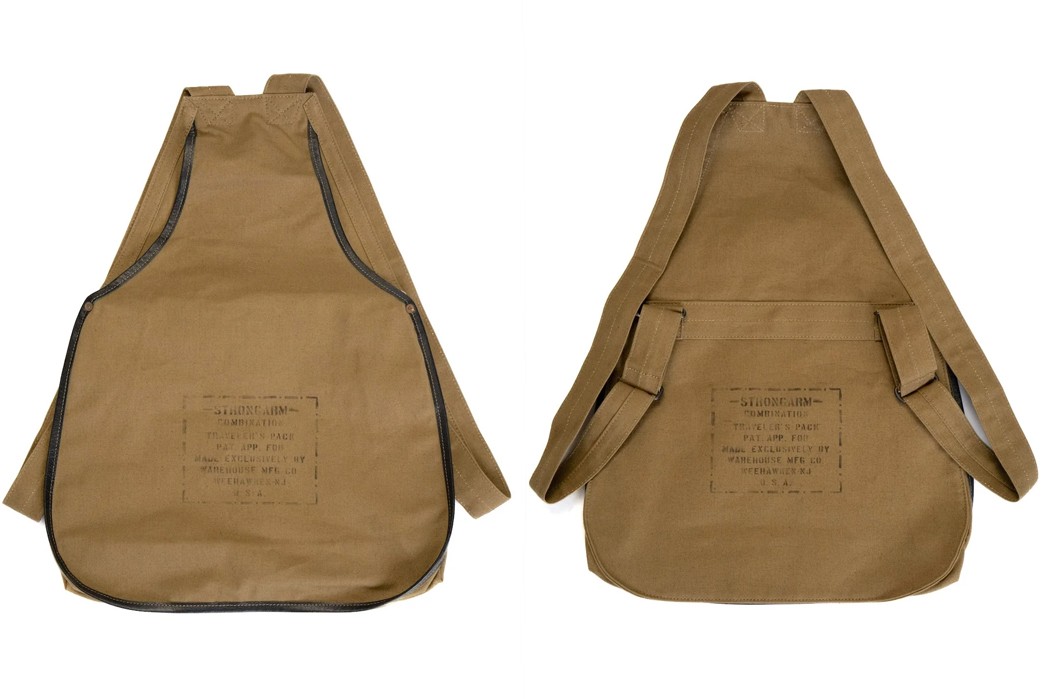
It’s hard to top an accessory that honors its vintage roots. This backpack by John Gluckow x Warehouse & Co. references a design that was filed with the patent office in 1915 and continues to captivate. The color and construction are reminiscent of a World War I field pack but the size is comparable to a game bag for hunting (hence the name ‘GAME’ Backpack). Made in Japan from heavy duck canvas, you won’t have to go that far to find one.
The Duck Canvas ‘GAME’ Bag is available at Corlection for $396 AUD (~$260USD)
Mystery Ranch
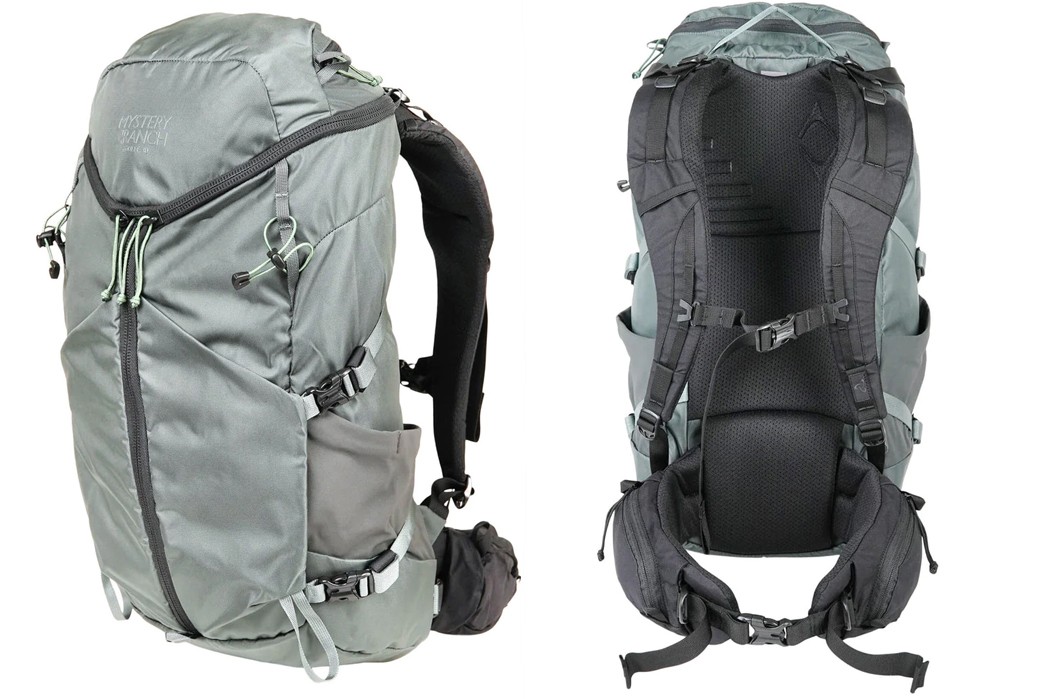
If comfort is your crux, then the designers at Mystery Ranch have you in mind. The Coulee 30 is nothing short of form-fitting but still has ample capacity. To help stabilize the backpack on rugged hikes, an integral waist belt will help it hug your body and prevent it from swaying—it even has its own storage bags on either side!
Available from Hatchet Outdoor Supply for $132.30.

